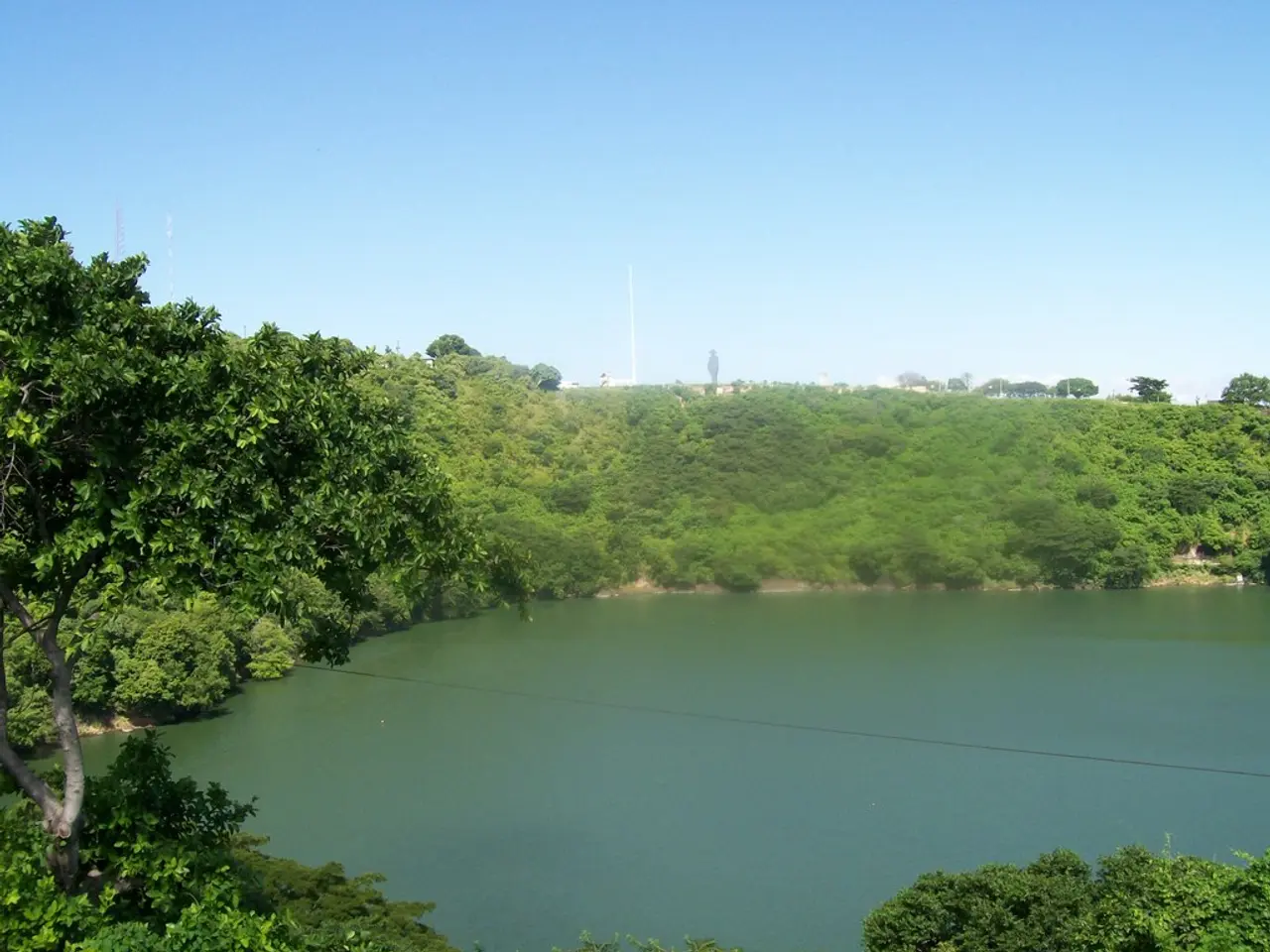Rise in India's critical water storage to 57% of reservoir capacity reported
## Record-Breaking Water Storage Levels in India's Major Reservoirs
As we approach the midpoint of 2025, India's major reservoirs are experiencing unprecedented growth in water storage levels. The Central Water Commission (CWC) has reported that as of July 18, the storage levels have surged to over **57%** of the total capacity, marking a **91%** increase from last year and **69%** above the average of the past decade [1][2]. This significant rise is primarily due to the abundant monsoon rains that have fallen across the country during the early part of the season.
## Regional Differences
- **Southern India**: This region has seen particularly impressive water levels, with dams exceeding **61%** of their capacities [1]. - **Western India**: States such as Gujarat, Maharashtra, and Goa have dams that are now filled to over **54%** of their capacities [1]. - **Mumbai**: The water supply situation in Mumbai has greatly improved, with the seven lakes reaching an impressive **73.88%** of their total capacity by mid-July. Modak Sagar was the first reservoir to reach full capacity and began overflowing [3].
## Agricultural Implications
The increased water storage levels in India's major reservoirs are expected to have a positive impact on kharif crop sowing in 2025. Here are some key points:
1. **Irrigation Access**: With higher reservoir levels, farmers will have better access to irrigation water, which is essential for kharif crops like paddy, pulses, and cotton. This can lead to improved crop yields and increased agricultural productivity.
2. **Early Sowing**: The availability of water can enable early sowing of kharif crops, allowing farmers to capitalize on favorable weather conditions and potentially cultivate healthier crops.
3. **Drought Mitigation**: In the event of a mid-season drought, having substantial water reserves can help mitigate its effects, ensuring continued plant growth and minimizing potential crop losses.
In summary, the increased water storage levels in India's major reservoirs are advantageous for agriculture, particularly during the kharif season, by ensuring a consistent water supply for irrigation and offering a buffer against potential droughts.
It's worth noting that at least **36%** of the country has experienced deficient rainfall as of July 17 [4]. However, the higher storage in the reservoirs and the surplus rain in most parts of the country will likely help kharif sowing this year.
- Uttarakhand's storage level is 32% of the reservoir capacity. - Rajasthan's reservoirs currently hold 70% of their capacity. - According to the India Meteorological Department, the monsoon is 9% surplus so far [5]. - Himachal's reservoirs have a storage level of 34.5% of their capacity. - The eastern region's 27 reservoirs hold 10.995 BCM, which is 50% of their total capacity. Storages in Mizoram, Tripura, and Bengal are more than 80% filled [6].
References:
[1] Central Water Commission (CWC) [2] India Meteorological Department (IMD) [3] Municipal Corporation of Greater Mumbai (MCGM) [4] India Meteorological Department (IMD) [5] India Meteorological Department (IMD) [6] Central Water Commission (CWC)
- The current surge in water storage levels in India's major reservoirs, as indicated by the Central Water Commission, has a direct impact on the economy, particularly the agricultural sector, as improved irrigation access could lead to increased agricultural productivity.
- The significant rise in water storage levels might also affect scientific fields such as environmental science, as the increased water supply could have implications for the management of water resources and the preservation of aquatic ecosystems.
- This record-breaking water storage growth may also impact the subscription-based services market, particularly those that focus on weather forecasting and climate change analysis, as increased demand for accurate and timely information might emerge.
- Such extraordinary water storage levels might influence the overall health of the economy by creating a more stable environment for businesses that rely on water for their operations, as well as reducing the risk of water-related crises during periods of drought or extreme weather events.








